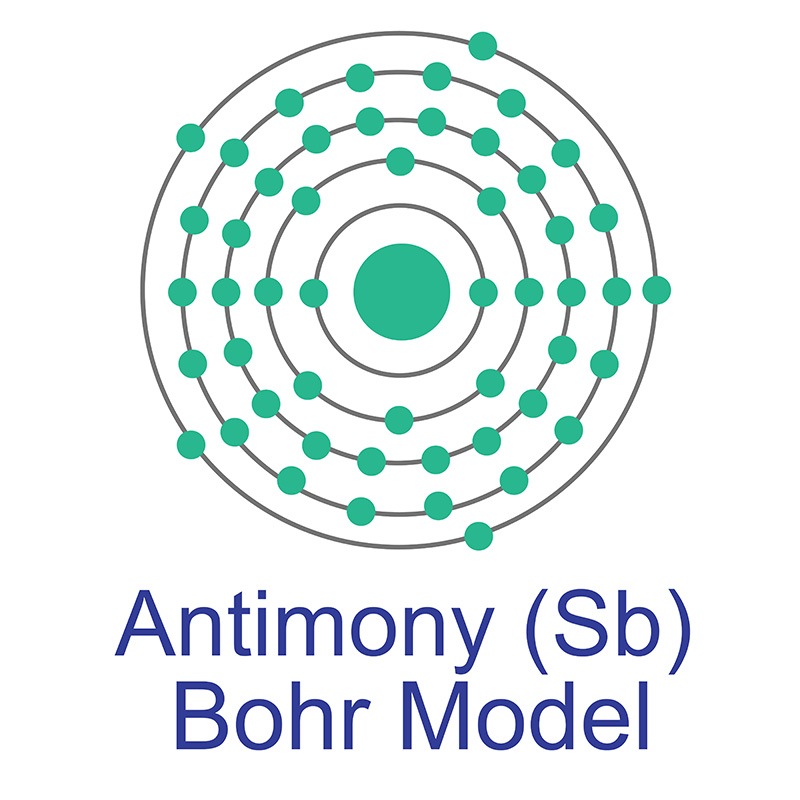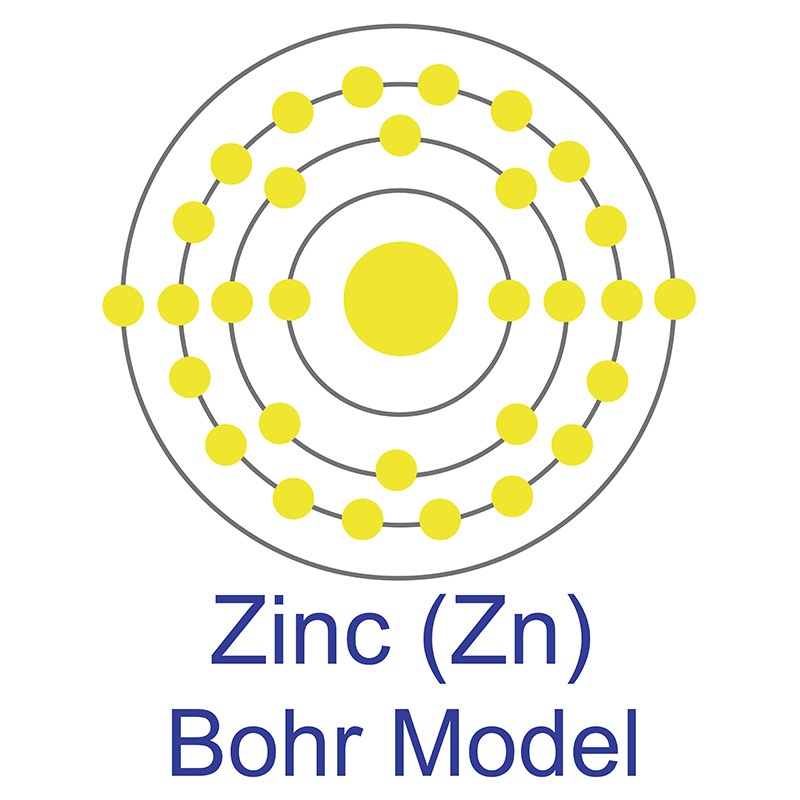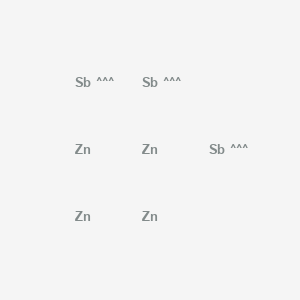SECTION 1. IDENTIFICATION
Product Name: Zinc Antimonide (Zn4Sb3)
Product Number: All applicable American Elements product codes, e.g. ZN-SB-02
, ZN-SB-03
, ZN-SB-04
, ZN-SB-05
CAS #: 12039-42-8
Relevant identified uses of the substance: Scientific research and development
Supplier details:
American Elements
10884 Weyburn Ave.
Los Angeles, CA 90024
Tel: +1 310-208-0551
Fax: +1 310-208-0351
Emergency telephone number:
Domestic, North America: +1 800-424-9300
International: +1 703-527-3887
SECTION 2. HAZARDS IDENTIFICATION
Hazard description:
Xi Irritant
Information pertaining to particular dangers for man and environment
R 36/37/38 Irritating to eyes, respiratory system and skin.
Classification system
HMIS ratings (scale 0-4)
(Hazardous Materials Identification System)
HEALTH 1
FIRE 1
REACTIVITY 1
Health (acute effects) = 1
Flammability = 1
Reactivity = 1
Classification of the substance or mixture
GHS Classification in accordance with 29 CFR 1910 (OSHA HCS)
Acute toxicity, Oral(Category 4), H302
Acute toxicity, Inhalation(Category 3), H331
Acute aquatic toxicity(Category 1), H400
Chronic aquatic toxicity(Category 1), H410
GHS Label elements, including precautionary statements
Pictogram
Signal word
Danger
Hazard statement(s)
H302
Harmful if swallowed.
H331
Toxic if inhaled.
H410
Very toxic to aquatic life with long lasting effects.
Precautionary statement(s)
P261
Avoid breathing dust/ fume/ gas/ mist/ Vapors/ spray.
P264
Wash skin thoroughly after handling.
P270
Do not eat, drink or smoke when using this product.
P271
Use only outdoors or in a well-ventilated area.
P273
Avoid release to the environment.
P304 + P340
IF INHALED: Remove victim to fresh air and keep at rest in a position comfortable for breathing.
P311
Call a POISON CENTER or doctor/ physician.
P321
Specific treatment (see supplemental first aid instructions on this label).
P330
Rinse mouth.
P391
Collect spillage.
P403 + P233
Store in a well-ventilated place. Keep container tightly closed.
P405
Store locked up.
P501
Dispose of contents/ container to an approved waste disposal plant.
Hazards not otherwise classified (HNOC) or not covered by GHS-none
SECTION 3. COMPOSITION/INFORMATION ON INGREDIENTS
Formula: ZnS:Cu
Substances
Synonyms: Zinc tetraantimonide
Formula: Zn4Sb3
Molecular weight: 626.84 g/mol
CAS-No.: 12039-42-8
SECTION 4. FIRST AID MEASURES
If inhaled:
Supply patient with fresh air. If not breathing, provide artificial respiration. Keep
patient warm.
Seek immediate medical advice.
In case of skin contact:
Immediately wash with soap and water; rinse thoroughly.
Seek immediate medical advice.
In case of eye contact:
Rinse opened eye for several minutes under running water. Then consult a
doctor.
If swallowed:
Seek immediate medical advice.
Description of first aid measures
General advice
Consult a physician. Show this safety data sheet to the doctor in attendance.
Move out of dangerous area.
If inhaled
If breathed in, move person into fresh air. If not breathing, give artificial respiration. Consult a physician.
In case of skin contact
Wash off with soap and plenty of water. Take victim immediately to hospital. Consult a physician.
In case of eye contact
Flush eyes with water as a precaution.
If swallowed
Never give anything by mouth to an unconscious person. Rinse mouth with water. Consult a physician.
Most important symptoms and effects, both acute and delayed
The most important known symptoms and effects are described in the labelling (see section 2) and/or in section 11
Indication of any immediate medical attention and special treatment needed
No data available
SECTION 5. FIREFIGHTING MEASURES
Suitable extinguishing agents
Carbon dioxide, extinguishing powder or water spray. Fight larger fires
with water spray or alcohol resistant foam.
Special hazards caused by the material, its products of combustion or
resulting gases:
In case of fire, the following can be released:
Metal oxide fume
Sulfur oxides (SOx)
Hydrogen sulfide
Protective equipment:
Wear self-contained respirator.
Wear fully protective impervious suit.
Extinguishing media
Suitable extinguishing media
Use water spray, alcohol-resistant foam, dry chemical or carbon dioxide.
Special hazards arising from the substance or mixture
Zinc/zinc oxides, Antimony oxide
Advice for firefighters
Wear self-contained breathing apparatus for firefighting if necessary.
SECTION 6. ACCIDENTAL RELEASE MEASURES
Person-related safety precautions:
Use personal protective equipment. Keep unprotected persons away.
Ensure adequate ventilation
Measures for environmental protection:
Do not allow material to be released to the environment without proper
governmental permits.
Measures for cleaning/collecting: Ensure adequate ventilation.
Additional information:
See Section 7 for information on safe handling
See Section 8 for information on personal protection equipment.
See Section 13 for disposal information.
Personal precautions, protective equipment and emergency procedures
Wear respiratory protection. Avoid dust formation. Avoid breathing Vapors, mist or gas. Ensure adequate ventilation.
Evacuate personnel to safe areas. Avoid breathing dust.
For personal protection see section 8.
Environmental precautions
Prevent further leakage or spillage if safe to do so. Do not let product enter drains. Discharge into the environment must be avoided.
Methods and materials for containment and cleaning up
Pick up and arrange disposal without creating dust. Sweep up and shovel. Keep in suitable, closed containers for disposal.
Reference to other sections
For disposal see section 13.
SECTION 7. HANDLING AND STORAGE
Handling
Information for safe handling:
Keep container tightly sealed.
Store in cool, dry place in tightly closed containers.
No special precautions are necessary if used correctly.
Information about protection against explosions and fires:
No special measures required.
Storage
Requirements to be met by storerooms and receptacles:
No special requirements.
Information about storage in one common storage facility:
Store away from oxidizing agents.
Do not store together with acids.
Further information about storage conditions:
Keep container tightly sealed.
Store in cool, dry conditions in well-sealed containers.
Precautions for safe handling
Avoid contact with skin and eyes. Avoid formation of dust and aerosols.
Further processing of solid materials may result in the formation of combustible dusts. The potential for combustible dust formation should be taken into consideration before additional processing occurs.
Provide appropriate exhaust ventilation at places where dust is formed.
For precautions see section 2.
Conditions for safe storage, including any incompatibilities
Keep container tightly closed in a dry and well-ventilated place.
Specific end use(s)
Apart from the uses mentioned in section 1 no other specific uses are stipulated
SECTION 8. EXPOSURE CONTROLS/PERSONAL PROTECTION
Additional information about design of technical systems:
Properly operating chemical fume hood designed for hazardous chemicals
and having an average face velocity of at least 100 feet per minute.
Components with limit values that require monitoring at the workplace:
Not required.
Additional information: No data
Personal protective equipment
General protective and hygienic measures
The usual precautionary measures for handling chemicals should be
followed.
Keep away from foodstuffs, beverages and feed.
Remove all soiled and contaminated clothing immediately.
Wash hands before breaks and at the end of work.
Avoid contact with the eyes and skin.
Breathing equipment:
Use suitable respirator when high concentrations are present.
Protection of hands: Impervious gloves
Eye protection: Safety glasses
Body protection: Protective work clothing.
Control parameters
Components with workplace control parameters
Contains no substances with occupational exposure limit values.
Exposure controls
Appropriate engineering controls
Avoid contact with skin, eyes and clothing. Wash hands before breaks and immediately after handling the product.
Personal protective equipment
Eye/face protection
Face shield and safety glasses Use equipment for eye protection tested and approved under appropriate government standards such as NIOSH (US) or EN 166(EU).
Skin protection
Handle with gloves. Gloves must be inspected prior to use. Use proper glove removal
technique (without touching glove's outer surface) to avoid skin contact with this product. Dispose of contaminated gloves after use in accordance with applicable laws and good laboratory practices. Wash and dry hands.
Body Protection
Complete suit protecting against chemicals, The type of protective equipment must be selected according to the concentration and amount of the dangerous substance at the specific workplace.
Respiratory protection
Where risk assessment shows air-purifying respirators are appropriate use a full-face particle respirator type N99 (US) or type P2 (EN 143) respirator cartridges as a backup to engineering controls. If the respirator is the sole means of protection, use a full-face supplied air respirator. Use respirators and components tested and approved under appropriate government standards such as NIOSH (US) or CEN (EU).
Control of environmental exposure
Prevent further leakage or spillage if safe to do so. Do not let product enter drains. Discharge into the environment must be avoided.
SECTION 9. PHYSICAL AND CHEMICAL PROPERTIES
General Information
Form: Powder
Color: Green
Odor: Sulphurous
Melting point/Melting range: 1700°C (3092°F)
Boiling point/Boiling range: Not determined
Sublimation temperature / start: Not determined
Flash point: N/A
Ignition temperature: Not determined
Decomposition temperature: Not determined
Danger of explosion: Product does not present an
explosion hazard.
Explosion limits:
Lower: Not determined
Upper: Not determined
Vapor pressure: Not determined
Density at 20°C (68°F): 4.087 g/cm³
Information on basic physical and chemical properties
Appearance
Form: solid
Odor
No data available
Odor Threshold
No data available
pH
No data available
Melting point/freezing point
Melting point/range: 570 °C (1,058 °F)
Initial boiling point and boiling range
No data available
Flash point
No data available
Evaporation rate
No data available
Flammability (solid, gas)
No data available
Upper/lower flammability or explosive limits
No data available
Vapor pressure
No data available
Vapor density
No data available
Relative density
6.33 g/cm3
Water solubility
No data available
Partition coefficient: n-octanol/water
No data available
Auto-ignition temperature
No data available
Decomposition temperature
No data available
Viscosity
No data available
Explosive properties
No data available
Oxidizing properties
No data available
Other safety information
No data available
SECTION 10. STABILITY AND REACTIVITY
Thermal decomposition / conditions to be avoided:
Decomposition will not occur if used and stored according to specifications.
Materials to be avoided:
Acids
Oxidizing agents
Dangerous products of decomposition:
Sulfur oxides (SOx)
Hydrogen sulfide
Metal oxide fume
Reactivity
No data available
Chemical stability
Stable under recommended storage conditions.
Possibility of hazardous reactions
No data available
Conditions to avoid
No data available
Incompatible materials
Acids, Strong oxidizing agents, Chlorates, Perchlorates.
Hazardous decomposition products
Other decomposition products- No data available
In the event of fire: see section 5
SECTION 11. TOXICOLOGICAL INFORMATION
Acute toxicity:
LD/LC50 values that are relevant for classification:
Oral LD50 >2000 mg/kg (rat)
Dermal LD50 >2000 mg/kg (rat)
Inhalative LC50/4H >5040 mg/m3/4H (rat)
Primary irritant effect:
on the skin: Powder: irritant effect
on the eye: Powder: irritant effect
Sensitization: No sensitizing effects known.
Subacute to chronic toxicity:
Zinc containing fumes may cause metal fume fever. Effects include dry
throat, metallic taste, chest pain, dyspnea, rales and dry cough.
Several hours later, chills may occur with lassitude, malaise, fatigue,
headache, back pain, muscle cramps, blurred vision, nausea, fever,
perspiration, vomiting and leukocytosis.
Subacute to chronic toxicity:
Sulfides show variable toxicity. The alkaline sulfides are similar in
action to alkalies. They cause irritation of the skin and are corrosive
by ingestion. The heavy metal sulfides are generally insoluble and show
little toxic action except through the liberation of hydrogen sulfide.
Hydrogen sulfide, if generated, is toxic, a severe irritant and
flammable. Effects include conjunctivitis, headache, nausea, dizziness,
coughing, pulmonary edema and possibly death.
Additional toxicological information:
To the best of our knowledge the acute and chronic toxicity of this
substance is not fully known.
No classification data on carcinogenic properties of this material is
available from the EPA, IARC, NTP, OSHA or ACGIH.
Information on toxicological effects
Acute toxicity
No data available
Inhalation: No data available
Dermal: No data available
No data available
Skin corrosion/irritation
No data available
Serious eye damage/eye irritation
No data available
Respiratory or skin sensitisation
No data available
Germ cell mutagenicity
No data available
Carcinogenicity
IARC:
No component of this product present at levels greater than or equal to 0.1% is identified as
probable, possible or confirmed human carcinogen by IARC.
ACGIH:
No component of this product present at levels greater than or equal to 0.1% is identified as a
carcinogen or potential carcinogen by ACGIH.
NTP:
No component of this product present at levels greater than or equal to 0.1% is identified as a
known or anticipated carcinogen by NTP.
OSHA:
No component of this product present at levels greater than or equal to 0.1% is identified as a
carcinogen or potential carcinogen by OSHA.
Reproductive toxicity
No data available
No data available
Specific target organ toxicity -single exposure
No data available
Specific target organ toxicity -repeated exposure
No data available
Aspiration hazard
No data available
Additional Information
RTECS: Not available
Headache, Nausea, metallic taste, sweet taste, chills, dry throat, Dizziness, Fever, Cough, Vomiting, Weakness
Stomach-Irregularities-Based on Human Evidence
Stomach-Irregularities-Based on Human Evidence
SECTION 12. ECOLOGICAL INFORMATION
General notes:
Do not allow undiluted product or large quantities of it to reach ground
water, water courses, or sewage systems.
Do not allow material to be released to the environment without proper
governmental permits.
Toxicity
No data available
Persistence and degradability
No data available
Bioaccumulative potential
No data available
Mobility in soil
Results of PBT and vPvB assessment
PBT/vPvB assessment not available as chemical safety assessment not required/not conducted
Other adverse effects
Very toxic to aquatic life with long lasting effects.
An environmental hazard cannot be excluded in the event of unprofessional handling or disposal.
SECTION 13. DISPOSAL CONSIDERATIONS
Product:
Recommendation
Consult official regulations to ensure proper disposal.
Uncleaned packagings:
Recommendation: Disposal must be made according to official regulations.
Waste treatment methods
Product
Offer surplus and non-recyclable solutions to a licensed disposal company.
Contact a licensed professional waste disposal service to dispose of this material.
Contaminated packaging
Dispose of as unused product.
SECTION 14. EXPOSURE CONTROLS/PERSONAL PROTECTION
Not a hazardous material for transportation.
DOT regulations:
Hazard class: None
Land transport ADR/RID (cross-border)
ADR/RID class: None
Maritime transport IMDG:
IMDG Class: None
Air transport ICAO-TI and IATA-DGR:
ICAO/IATA Class: None
Transport/Additional information:
Not dangerous according to the above specifications.
DOT (US)
UN number:1549
Class: 6.1
Packing group: III
Proper shipping name: Antimony compounds, inorganic, solid, n.o.s.(Zinc antimonide)
Reportable Quantity(RQ):
Marine pollutant: No
Poison Inhalation Hazard: No
IMDG
UN number: 1549
Class: 6.1
Packing group: III
EMS-No: F-A, S-A
Proper shipping name: ANTIMONY COMPOUND, INORGANIC, SOLID, N.O.S.(Zinc antimonide)
Marine pollutant: No
IATA
UN number:1549
Class: 6.1
Packing group: III
Proper shipping name: Antimony compound, inorganic, solid, n.o.s.(Zinc antimonide)
SECTION 15. REGULATORY INFORMATION
Product related hazard informations:
Hazard symbols:
Xi Irritant
Risk phrases:
36/37/38 Irritating to eyes, respiratory system and skin.
Safety phrases:
26 In case of contact with eyes, rinse immediately with plenty of water
and seek medical advice.
37 Wear suitable gloves.
National regulations
All components of this product are listed in the U.S. Environmental
Protection Agency Toxic Substances Control Act Chemical substance
Inventory.
Information about limitation of use:
For use only by technically qualified individuals.
This product contains zinc and is subject to the reporting requirements
of section 313 of the Emergency Planning and Community Right to Know Act
of 1986 and 40CFR372.
SARA 302 Components
No chemicals in this material are subject to the reporting requirements of SARA Title III, Section 302.
SARA 313 Components
This material does not contain any chemical components with known CAS numbers that exceed the threshold (De Minimis) reporting levels established by SARA Title III, Section 313.
SARA 311/312 Hazards
Acute Health Hazard, Chronic Health Hazard
Massachusetts Right To Know Components
No components are subject to the Massachusetts Right to Know Act.
Pennsylvania Right To Know Components
Zinc antimonide
CAS-No.
12039-42-8
Revision Date
New Jersey Right To Know Components
Zinc antimonide
CAS-No.
12039-42-8
Revision Date
California Prop. 65 Components
This product does not contain any chemicals known to State of California to cause cancer, birth defects, or any other reproductive harm.
SECTION 16. OTHER INFORMATION
Safety Data Sheet according to Regulation (EC) No. 1907/2006 (REACH). The above information is believed to be correct but does not purport to be all inclusive and shall be used only as a guide. The information in this document is based on the present state of our knowledge and is applicable to the product with regard to appropriate safety precautions. It does not represent any guarantee of the properties of the product. American Elements shall not be held liable for any damage resulting from handling or from contact with the above product. See reverse side of invoice or packing slip for additional terms and conditions of sale. COPYRIGHT 1997-2022 AMERICAN ELEMENTS. LICENSED GRANTED TO MAKE UNLIMITED PAPER COPIES FOR INTERNAL USE ONLY.

 The most common source of antimony is the
The most common source of antimony is the  The zinc atom has a radius of 134 pm and a Van der Waals radius of 210 pm. Zinc was discovered by Indian
The zinc atom has a radius of 134 pm and a Van der Waals radius of 210 pm. Zinc was discovered by Indian  It is a fair conductor of electricity, and burns in air at high red producing white clouds of the
It is a fair conductor of electricity, and burns in air at high red producing white clouds of the 
